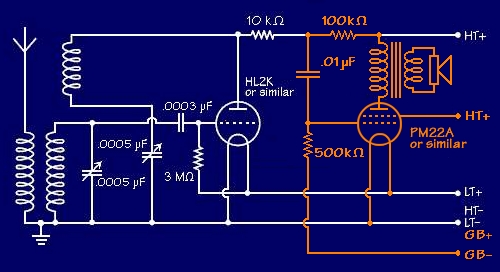|
|
John Shepherd's copies of the
circuit and components list for the
Midget AC Mains 2-Valver
Reproduced by kind permission.
|
|
|
Although John no longer has the set itself, his images (with his schoolboy handwriting and the
discoloration of age) are well worth sharing, and it is instructive to compare them with the
later version from Fun with Radio.
John also kindly sent me an extract from his life story that he has written for his sons and
grandchildren. In the following, I quote from this with his permission, and have woven
into this the other facts that emerged during our interchanges.
Some time around 1953 Mum and I visited [a Scout friend]. His Dad mentioned
that he and his son had built a working crystal set. I listened to it and was
gob-smacked! There was a BBC programme faintly audible in the headphones.
It was built by a boy, had only about five components, did not need a battery, and IT
WORKED! Radio had always been magic and mysterious to me; when I was small I even
imagined that there must be miniature musicians inside - nothing else made sense.
Inspired, John went up to his local library and started studying books to understand more,
copying electronic circuits and articles into his diary. A little later, aged 14, he
decided to build the Davey Midget AC Mains 2-valver, and sent for the full details.
A lot of the components for that radio and other projects came from wartime surplus shops
up in Lisle Street off Leicester Square, or St Martins Lane behind Trafalgar Square.
Others came from Atlantic Radio at Brixton.
[At first m]y radio did not work. Part of the problem was that my soldering iron
was not electric. It had to be heated in the fire to what I could only guess was
the right temperature. Some of the joints must have been very dodgy. The
iron had a wooden handle and cost 1/6d (7 1/2p) from Woolworths. Fortunately a
neighbour, Mr. Foster, who lived up the Road was a radio amateur and constructor.
He was a postman by day, but in his spare time constructed working television and radio
sets using government surplus radar tubes and electronic chassis. The ex-radar
tubes produced a curious green TV picture. He got my radio working and gave me many useful
tips. I am eternally grateful to that man for his patience and guidance.
I now realise how potentially dangerous it was. There was no earth wire, or mains
transformer to isolate the chassis. Instead, one side of the 240 volt mains was
connected directly to the metalwork. Sometimes I felt a tingling sensation when
touching exposed metal parts. That was the cue to reverse the two-pin plug in the
socket to prevent the chassis from being live. I am fortunate to be here to write about it.
Dangerous or not, John built a second set for a neighbour. The "live chassis" arrangement
was not unusual at the time, and a number of Davey designs used it. In this case Davey
carefully listed the precautions to be taken: the set should not be handled or adjusted while
switched on, should not be earthed, and should be enclosed in a cabinet when complete.
Control knob grub screws should be recessed or covered.
When re-published in Fun with Radio the non-isolated power supply was retained, but the
detector valve was strapped as a triode. In the Fun with Radio version, the audio
from the detector is taken from the HT side of the RF choke, whilst John's diagram shows it taken
from the detector anode. I believe that the Fun with Radio version is correct,
so either there was an error in the diagrams that BOP sent out on request, or John simply
mis-copied it.
Both John's copy and the Fun with Radio version show the output valve's suppressor
grid connected to its cathode, but John's copy also shows a dotted connection from the
suppressor grid to ground - alongside and apparently superseding this. Was this perhaps
a modification suggested by John's neighbour Mr Foster?
Adding up the prices on the components list, and adding 5 shillings to allow for two EF50s, gives a
total of £2 19s 8d (£2.98p) if my arithmetic is correct. John might have had to add the cost of
the High Frequency Choke (un-priced) and a loudspeaker (not mentioned), plus sundries such as chassis
materials, wire, screws, and that 2-pin mains plug. These might have added another £1 10s or so
to the budget. Oh, for a time machine to stock up on cheap old components - but thank goodness
for decimal currency!
As mentioned, we have no pictures of this set - unless John decides to do a rebuild, perhaps
with a fully isolated power supply! Although the specified coil is now very scarce, there
are others available, and still plenty of EF50s around, so how about it, John?
As mentioned, this design employs a non-isolated power supply, which does not meet modern safety
standards. If you contemplate building a version of this set, please read the warning
notice at the head of this page.
|
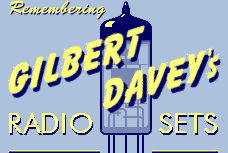
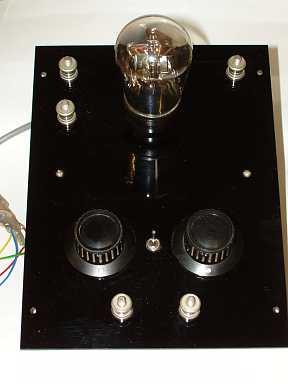
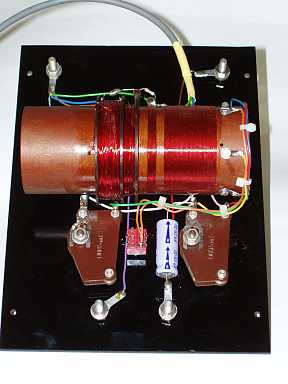

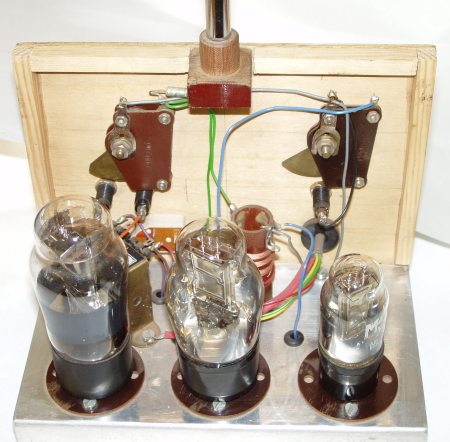
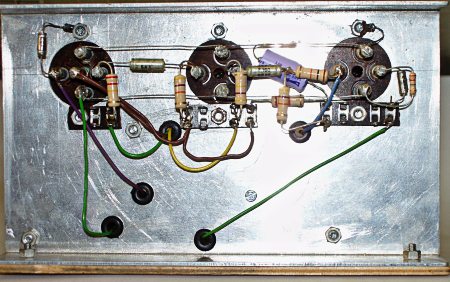
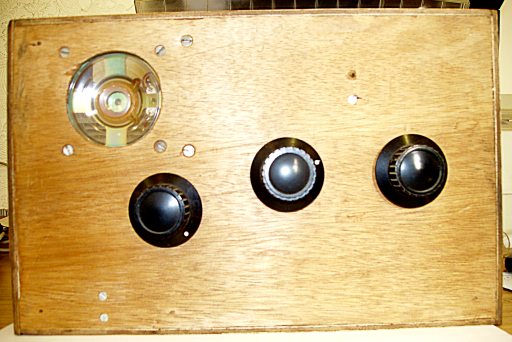
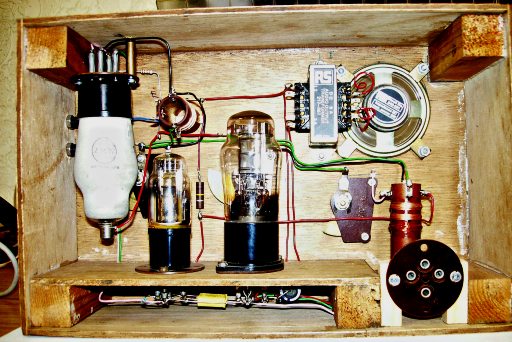
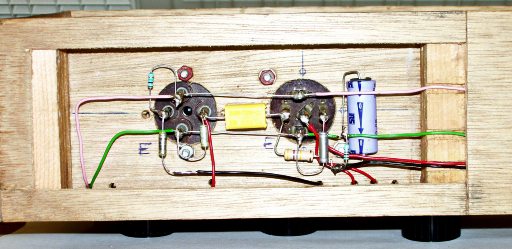

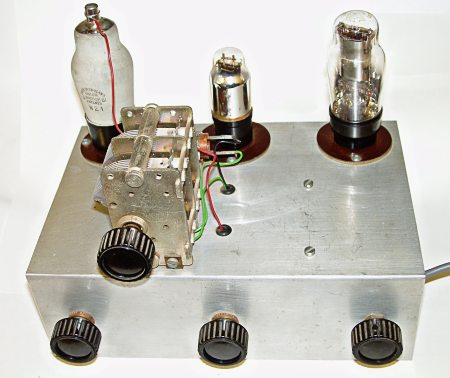
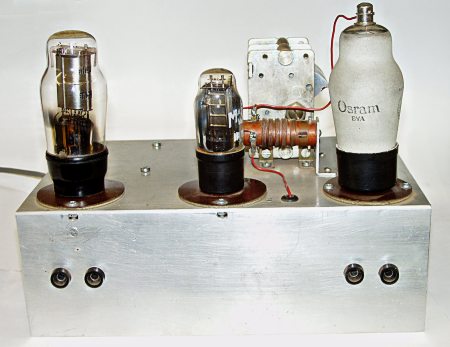
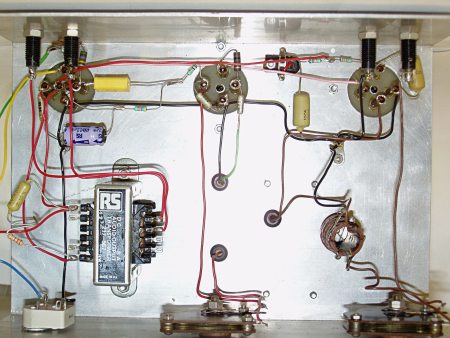
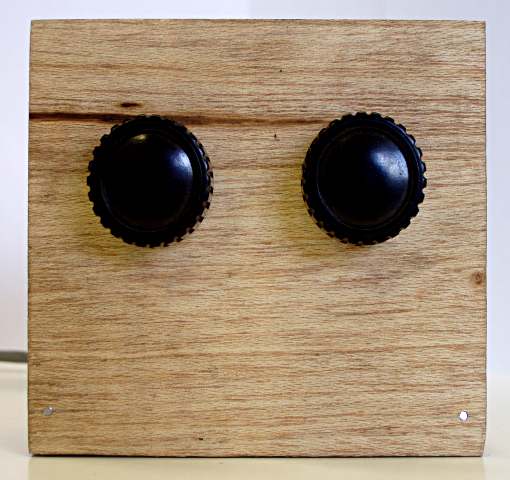
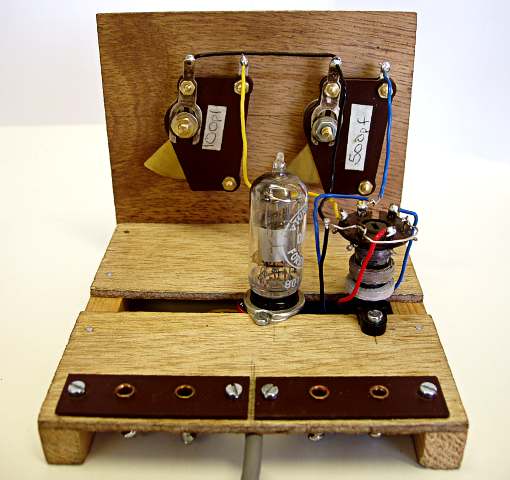


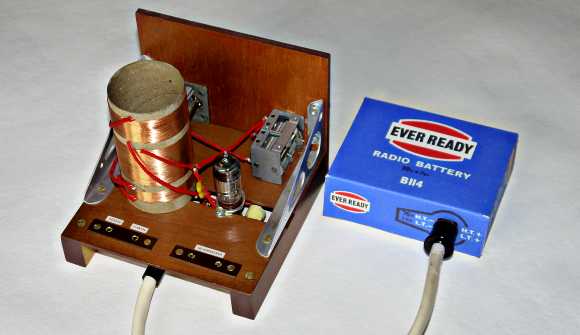
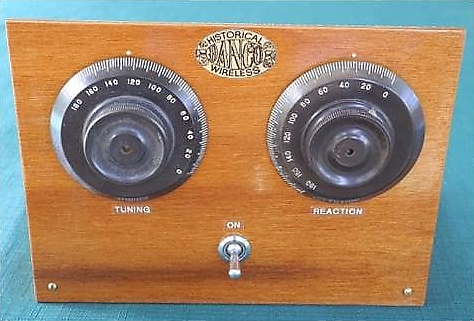
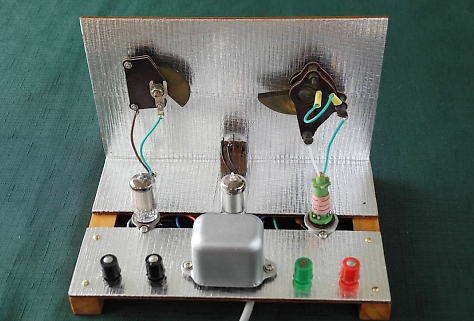
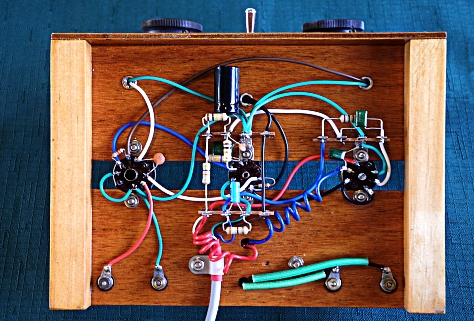
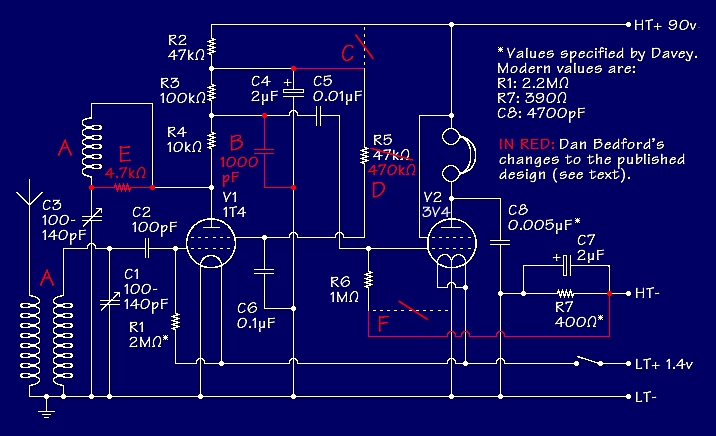
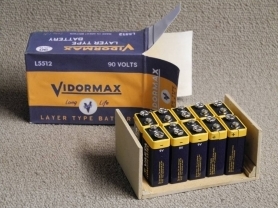
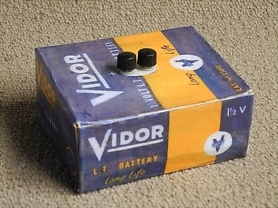
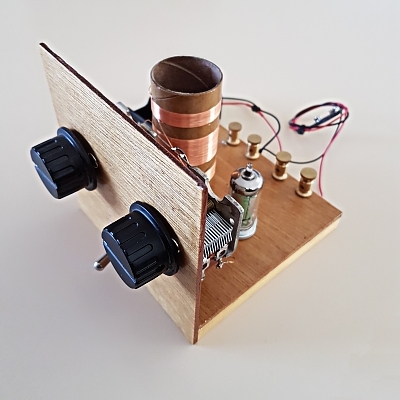
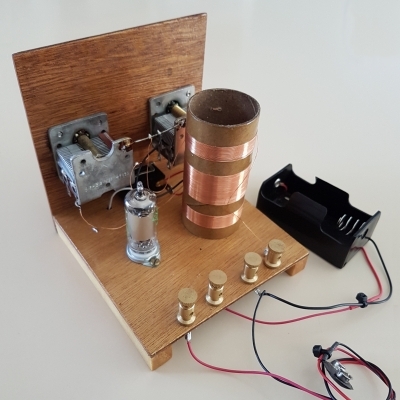
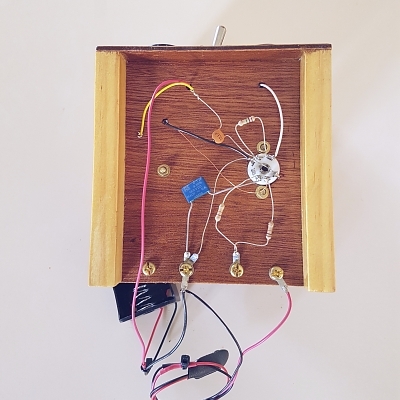
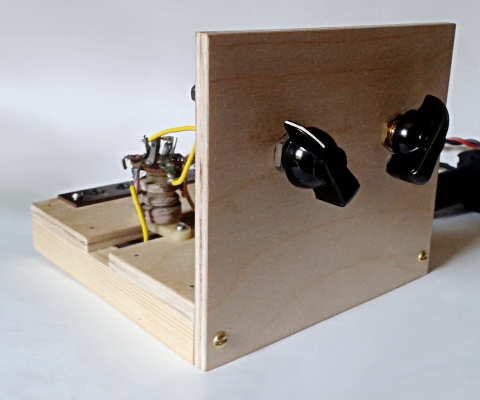

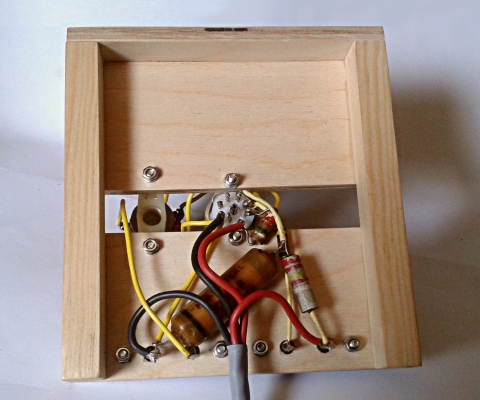
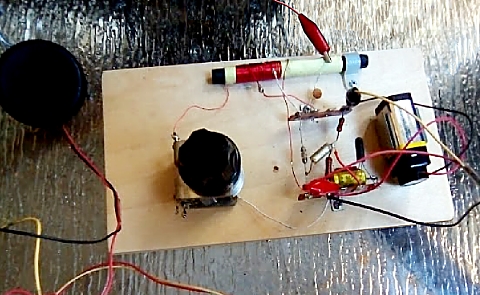
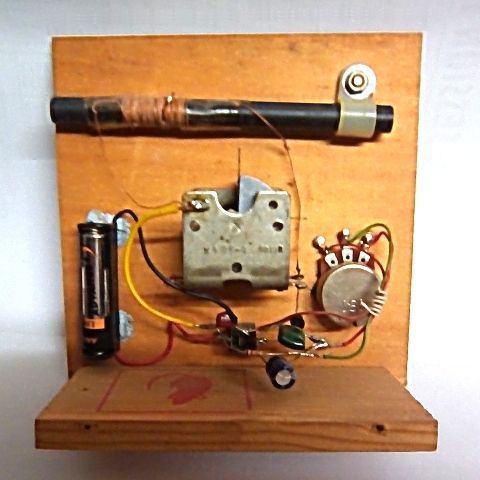
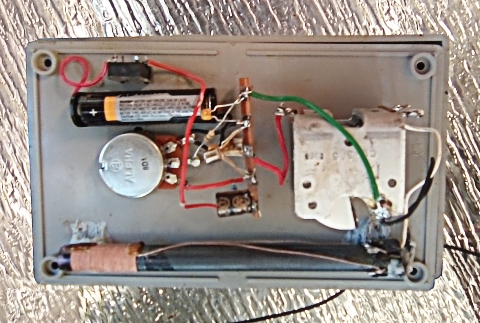
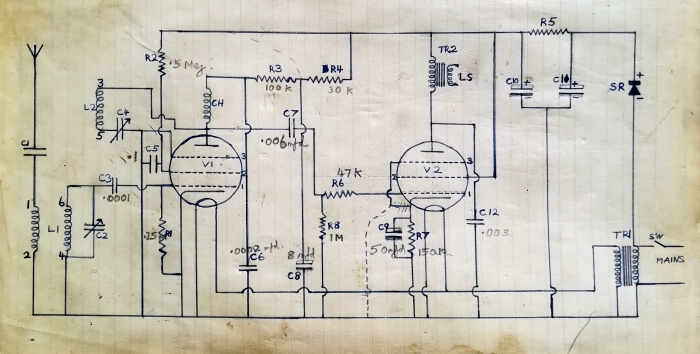
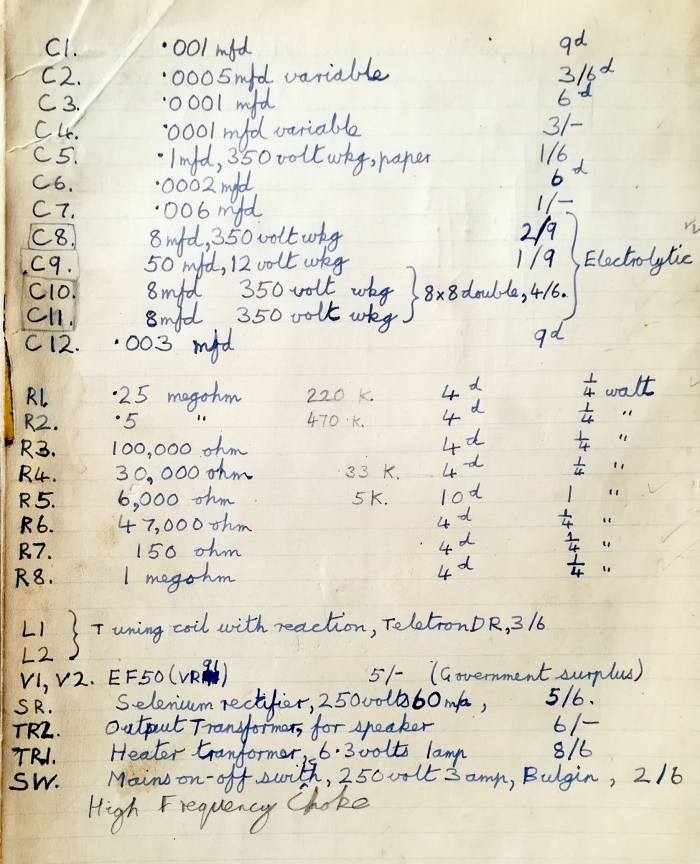
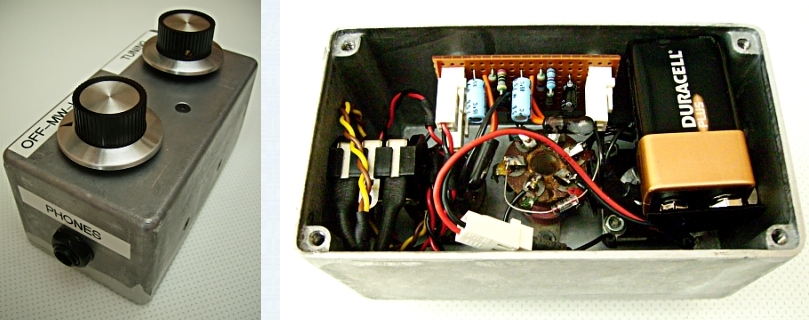
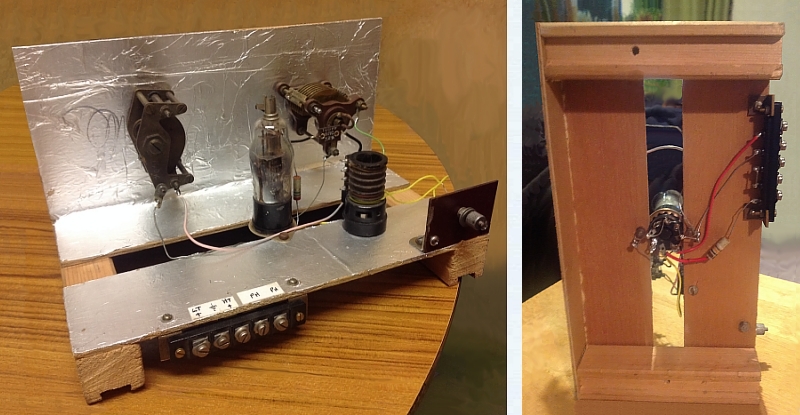
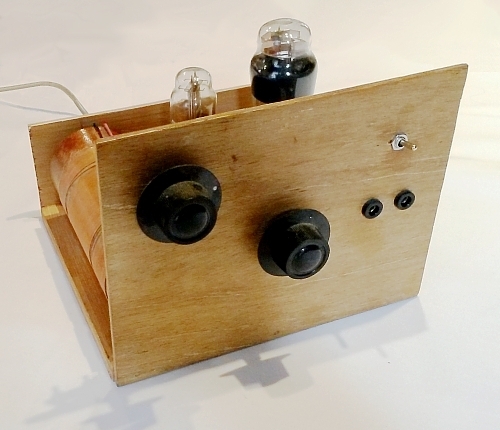
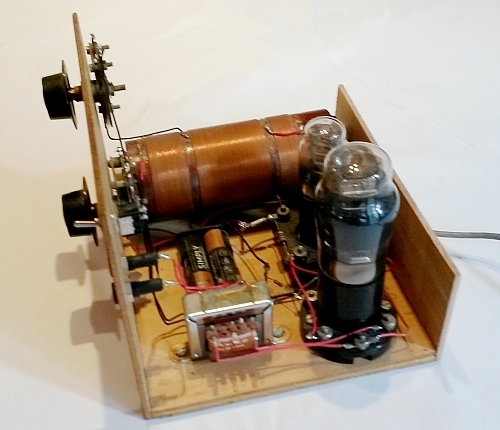
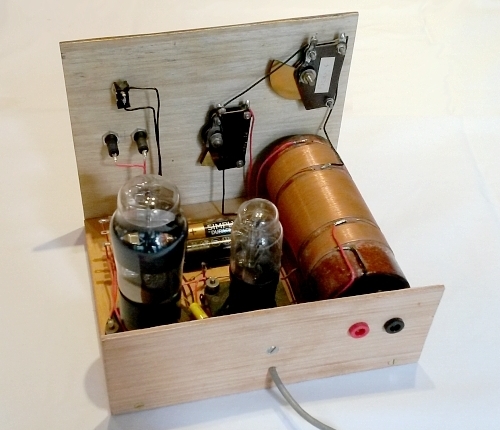
 I am delighted to be able to include another receiver built by Hugh Castellan.
This medium-wave set is based upon the article in the November 1948 edition of
Boy's Own Paper, which describes the addition of an output valve to the one-valver
of the February 1948 edition. The February article had specified construction
with a plywood front panel and solid baseboard, with a surface-mounted valveholder and
space reserved for the second valveholder.
I am delighted to be able to include another receiver built by Hugh Castellan.
This medium-wave set is based upon the article in the November 1948 edition of
Boy's Own Paper, which describes the addition of an output valve to the one-valver
of the February 1948 edition. The February article had specified construction
with a plywood front panel and solid baseboard, with a surface-mounted valveholder and
space reserved for the second valveholder.
